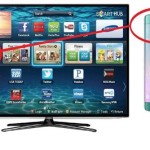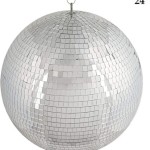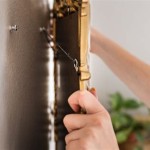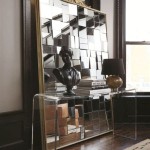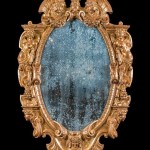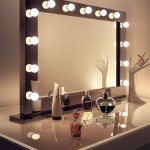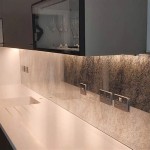How To Hang a Mirror With Wire
Hanging a mirror securely and aesthetically pleasing requires careful planning and execution. Using wire offers a traditional and versatile method for various mirror sizes and weights. This guide outlines the process of hanging a mirror with wire, focusing on safety and proper techniques.
Assessing the Mirror and Wall: Before beginning, examine the back of the mirror. Ensure it has D-rings or other suitable hardware for attaching wire. If not, these will need to be installed. Determine the desired hanging height, considering factors such as eye level and surrounding furniture. Using a stud finder, locate the wall studs in the area where the mirror will hang. Marking their locations with a pencil is helpful for later reference.
Choosing the Right Wire: The wire selected should be rated for the weight of the mirror. Consult the packaging for weight capacity. Generally, heavier mirrors require thicker, more robust wire. Picture hanging wire is readily available at hardware stores in various gauges. Avoid using thin, flimsy wire, as this poses a safety risk. Opting for a coated wire can help prevent scratching the mirror frame.
Attaching the Wire to the D-Rings: Measure and cut a length of wire approximately twice the width of the mirror frame, allowing for extra length to wrap around the D-rings. The wire should form a gentle curve when the mirror hangs. Thread one end of the wire through the first D-ring. Wrap the wire back around itself several times, ensuring a tight and secure connection. Repeat this process with the other end of the wire and the second D-ring. Ensure the wire is taut and evenly distributed between the rings.
Calculating Hook Placement: The distance between the D-rings and the top of the mirror frame influences where the hooks should be placed on the wall. Measure the distance from the top of the frame to the wire when it is taut. This measurement, added to the desired height of the mirror’s top edge from the floor, will determine the vertical placement of the hooks.
Selecting Appropriate Hooks: The type of hook used depends on the weight of the mirror and the wall construction. Heavy-duty picture hooks are suitable for lighter mirrors and drywall. For heavier mirrors, especially on plaster or masonry walls, it is advisable to use wall anchors and screws. Consult the hook packaging for weight limits and installation instructions. If hanging on drywall, consider using anchors rated for heavier weights to provide added security and prevent the mirror from pulling out of the wall.
Installing the Hooks: Using the calculated measurements and marked stud locations, determine the optimal positions for the hooks. Ideally, hooks should be placed into wall studs for maximum support. If studs are not available where desired, use appropriate wall anchors following the manufacturer's instructions. Ensure the hooks are installed at the same height and evenly spaced to prevent the mirror from tilting. Double-check the placement before hanging the mirror.
Hanging the Mirror: Carefully lift the mirror and place the wire onto the hooks. Ensure both sides of the wire are securely seated on the hooks. Gently release the mirror to check for stability. Step back and examine the mirror’s positioning. Adjust the hooks if necessary to achieve the desired height and levelness. A level can be used to ensure the mirror hangs straight.
Safety Considerations: Always exercise caution when handling heavy objects like mirrors. Wear appropriate safety gloves to protect hands. If the mirror is exceptionally large or heavy, enlist the help of another person. Never hang a heavy mirror on a single hook or weak wall anchor. Regularly inspect the hanging hardware for signs of wear or damage. If any issues are detected, rehang the mirror using appropriate hardware and techniques.
Alternative Hanging Methods: While wire is a common and versatile method, other options exist for hanging mirrors. French cleats offer a robust and secure method for heavy mirrors, distributing the weight evenly along a cleat system. Adhesive hangers can be used for lighter mirrors on smooth surfaces, but these may not be suitable for all wall types. For certain mirror designs, specialized mounting brackets may be required. Always choose a hanging method appropriate for the mirror’s weight, size, and the wall construction.
Final Adjustments and Considerations: Once the mirror is hung securely, make any final adjustments to its position. Use a soft cloth to clean the mirror surface. Consider adding bumpers or felt pads to the back of the mirror frame to protect the wall from scratches. Regularly inspect the hanging hardware to ensure it remains secure. If any adjustments are necessary, carefully remove the mirror from the hooks before making changes.

How To Hang A Mirror With Wire Pictures Wikihow Picture Hanging Heavy

How To Adjust A Mirror Art Or Picture Hanging Wire

How To Hang A Mirror Home

Picture Wire Strung Between Two D Rings Attached To The Back Of A Frame Hanging Mirror Heavy Installation

How To Adjust A Mirror Art Or Picture Hanging Wire

How To Adjust A Mirror Art Or Picture Hanging Wire

How To Hang A Heavy Mirror

Beam Picture Mirror Hanging Wire Hook Set No Nails Damage

How To Install Wire On Back Of Mirror

How To Hang A Heavy Mirror The Home Depot

